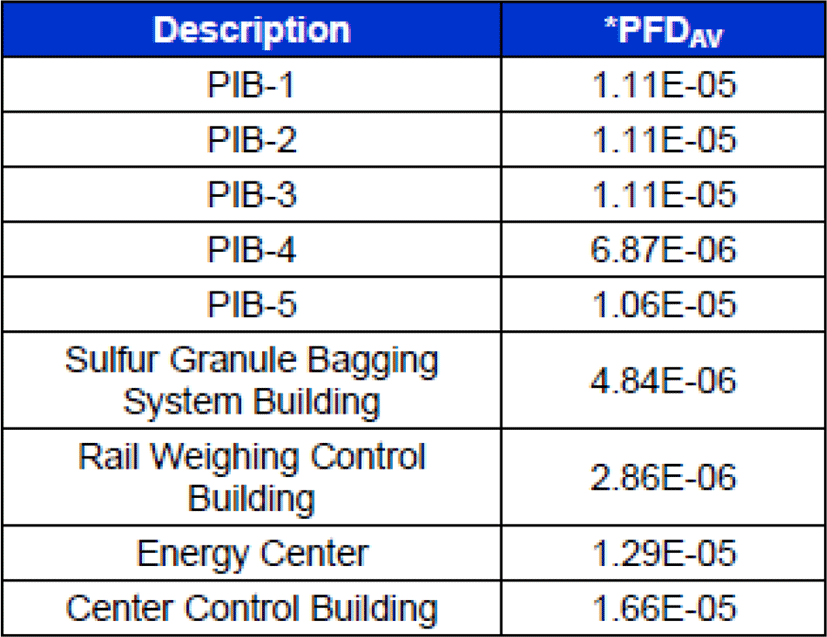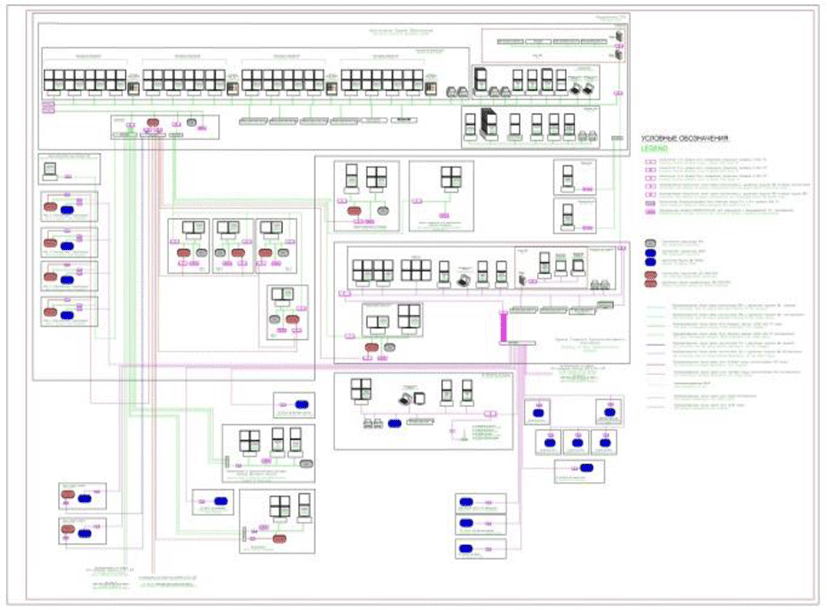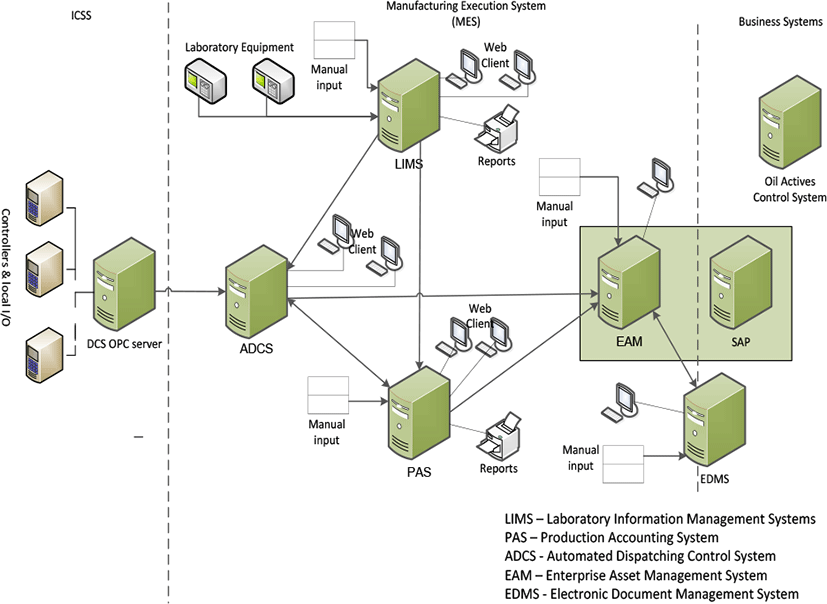I. INTRODUCTION
To date, the development of intelligent systems of the centralized enterprise management is a completely new experience for industrial facilities on the territory of the Republic of Uzbekistan. The key feature of these systems is the most flexible integration of subsystems at all levels and commonality of information provision, until the unification of databases, of course under the condition of providing the required degree of cyber security at all levels of the management system.
II. CONTROL SYSTEM
The achievement of this goal, as a rule, meets difficulties at the stage of creation of technological processes control systems (PCS), when various process units are designed on the basis of control systems from different manufacturers. However, despite the commendable efforts of control systems manufacturers to ensure reliable protected openness of system interfaces and its integration capability with other systems, software, hardware and informational provision of each individual management system still differs in the end, being defined technically unique characteristics and causes difficulties for the integration of this system with other management systems [1].
Another difficulty in the way of creating intelligent systems for centralized management of the enterprise in the territory of the Republic of Uzbekistan is a lack of practical experience in the implementation of multidisciplinary automated enterprise management systems (AEMS), also known as Manufacturing Execution System (MES), especially with a high level of mutual integration with the process control systems.
In conjunction with the foregoing, the experience of developing an intelligent system of centralized enterprise management on the example of the project of Kandym gas processing plant construction and Kandym group of field development is particularly important for our Republic.
Technical Direction for the integrated control and safety management system (ICSS) specifies complex automation of the objects of Kandym group of fields, which yearly production is 8.1 bln. m3 of formation fluid per year. The plant will include all process systems, utility systems, non-process facilities and infrastructure, required for the production of sales gas, stabilized condensate and sulphur.
Gathering system consists of 114 producing wells combined into cluster sites and further combined into gas gathering stations, thus, forming a classic tree structure widely used for hydrocarbons collection systems.
Main objects at the cluster sites are: inlet manifold, fuel gas package, metering separator package, anti-corrosive inhibitor protection system for pipelines, mobile hydrate inhibitor system, and flare system.
Main objects at the gathering stations are: inlet manifold, fuel gas package, metering separator package, product separator, and anti-corrosive inhibitor protection system for pipelines, gas compression unit, and flare system.
CPF consists of the following objects:
-
Input system for separation of raw gas and condensate/water mixture;
-
Gas sweetening system for removal of acid gas, H2S and CO2 from the raw gas. The system allows for selective Н2S removal and partial СО2 removal from the acid gas by amine treatment. Gas sweetening unit consists of two trains, each having 50% capacity for raw gas treatment;
-
Mercaptan removal and dehydration system designated for removal of mercaptan and water using molecular sieves for conformity with the technical requirements for sales gas. This system consists of two trains, each having 50% capacity for raw gas treatment;
-
Gas treatment agent regeneration system considered for treatment of regeneration gas from the mercaptan removal and dehydration system by physical absorption and for reuse of regeneration gas;
-
Low temperature separation system provided for sales gas production to meet hydrocarbon dew point temperature by using low temperature separation with a coolant method. Low temperature separation system consists of two trains, each having 50% capacity for raw gas treatment;
-
Single condensate stabilization system designed for the entire complex to meet the requirements of the Reid vapour pressure (RVP) of produced hydrocarbon condensate;
-
There are two sulphur recovery system trains for sulphur production from acid gas in GPP gas treatment system. This unit produces liquid sulphur which is directed to the granulating and packaging system;
-
Utilities and non-process facilities, required for the operation of above-mentioned systems.
Main pipeline is a main gas transport system, including the following:
Kandym group of fields is located in the south of central region of Uzbekistan in close proximity to Turkmenistan border.
Climate is extremely continental with extreme ambient temperatures, severe winds (south and east winds prevail), low humidity and pour precipitations.
In general the terrain is hill-like desert with barkhans and shifting sands. Contract area is featured by considerable seismic loads.
To achieve this goal for the development of an intelligent system of enterprise centralized management Technical center of “Ximavtomatika” LLC (Uzbekistan) with the support of the management of the “LUKOIL Uzbekistan operating company” Company proposed an integrated solution, based on the main criteria of unity of hardware and software platforms of intelligent systems for centralized management of the enterprise. To perform tasks on providing of uniform software, hardware and information provisions of management system and creating ultimately a single global enterprise database were involved the best system engineers, software engineers and network engineers.
The result of this work is the basic design of project, which opens a new page in the history of development of innovative information technologies in the gas industry of the Republic of Uzbekistan.
The essence of the chosen technical solutions for the development of an intelligent system for centralized management of Kandym gas processing plant and a complex of objects of Kandym group of fields is as follows.
ICSS is developed as a single process control system (well - cluster site - gathering station - CPF - sales production export + utility processes) and is implemented based on microprocessor technology, united into single software-hardware complex.
Functionally, ICSS consists of the following major systems:
-
- Distributed Control System (DCS);
-
- Emergency Shutdown System (ESD);
-
- Fire and Gas Detection System (F&G);
-
- Instruments Asset Management System (IAMS);
-
- Power Management System (PMS);
-
- Supervisory Control and Data Acquisition (SCADA);
-
- Complex of Remote Terminal Units (RTU);
-
- Operator Training Simulation system (OTS).
Probability of system failure has been considered based on the following formula:
Where PFDAV- Probability of Failure on Demand (Average)
q – Probabilities of system elements failures,
p – Probabilities of system elements working without failures.
So, for the Kandym gas processing plant and a complex of objects of Kandym group of fields PFD summary calculation is provided in below Figure 1.
ICSS has three hierarchical levels and corresponds to modular approach of development. ICSS levels are listed below:
Level 1.
Lower level (Instrumentation) – instrumentation level, intended for gathering of the information on control object and control actions on objects. Instrumentation level includes transmitters, alarm switches, analysers, flow control computers, actuators, motors and other drives, installed at technological equipment and in special rooms, and also include devices which are designated for gathering of the information for power management system.
Level 2.
Middle level (controllers) – programmable logic controller (PLC) level, intended for converting the data from control level 1, processing this information, generation of commands for lower level actuators and preparation this information for upper control level. PLC level includes local controllers and display devices at control cabinets.
Level 3.
Upper level (human-machine interface) – process visualization level (HMI, SCADA, batch processing systems) is intended for gathering of data from level 2, processing and presenting of the data in a convenient form for the operator, and for remote process control using level 2 devices. Level 3 shall have software and hardware to transmit the process data to Customer central office, using existing IT infrastructure (LAN, network firewall, FOCL, etc.);
Kandym GPP and Kandym group of fields ICSS architecture is shown in the below Figure 2:
ICSS shall be integrated with enterprise information systems (level 5 of enterprise informational model) via MES systems (level 4 of enterprise informational model).
Level 4.
Manufacturing Execution Systems (MES) – include Laboratory information management system (LIMS), Automatic Dispatch Control System (ADCS), Production accounting system (PAS) and Enterprise Asset Management system (EAM). This complex of modern enterprise management systems (MES) is a strategic level of intelligent information systems, which is actually “joins” ICSS system with enterprise resource planning (ERP) information systems. The versatility of complex of subsystems at this level is a unique innovation in industry of the Republic of Uzbekistan and without any exaggeration puts our country on a par with those adhering to a high-tech civilization approach.
Level 5.
Enterprise Resource Planning (ERP) information systems – include service advertising protocol (SAP), electronic document management system (EDMS), and capital funds management system.
As the level 4 and level 5 are not part of ICSS, but are designed on the basis of the above tasks as flexible as possible integrability with ICSS subsystems to create ultimately a unique intellectual system of centralized management of the enterprise.
Metrological characteristics of ICSS systems are calculated based on the below model of measurement system’s error:
Where ΔMI - the error of measurement in real conditions of use;
Δos - the systematic component of base error of a measuring mean;
- the random component of base error of a measuring mean;
- the random component of base error which is due to the hysteresis;
- Combination of additional Δci errors of measurement means, which is due to the action of the influencing factors and uninformative parameters of the input signal of measuring means;
Δdyn - dynamic error of measurement means which is due to the influence of the rate of change of the input signal of measuring means;
l - the number of additional errors.
Calculated results are the following:
Automated enterprise management system of Kandym GPP is designated for:
-
- centralized operational control over production and support facilities of Kandym group of fields and Kandym gas processing plant;
-
- providing of methodology and tools for improving the efficiency of gas production, preparation, transportation and delivery of products manufacturing processes management and for improving the efficiency of reservoir pressure maintain.
As a result of completion MES implementation project works following objectives shall be achieved:
-
- Increasing responsiveness and quality of control decisions;
-
- Increasing planning precision and work control responsiveness;
-
- Structured process data collection, updating, distribution, issue and usage;
-
- Informational support of major and utility services;
-
- Implementation of effective production asset management model on the basis of “Situation prediction”. This model widely uses tools of planning for maintenance and repair of equipment (EMR) which are based on the usage of EMR strategy system, EMR process charts (instructions) and predictive maintenance plans, which are based on technical state estimation and equipment diagnostics and study results analysis [2];
-
- Building of EMR planning process to develop objective programs, aimed at achieving specified key performance indicators (KPI) and development and performing EMR actions to lower the operation costs;
-
- Automation of product quality control processes;
-
- Laboratory staff operating schedule maintenance;
-
- Laboratory key performance indicators maintenance;
-
- Speeding of return of analysis results;
-
- Keeping privacy of information;
-
- Providing reliable data on product quality parameters to concerned facility services in real time;
-
- Increasing the effectiveness of laboratory operation.
For the achievement of above objectives following technical solutions have been chosen.
AEMS is the system that integrates the following subsystems that perform special functions associated with the individual processes of the enterprise activity and the work of individual business departments of enterprise:
-
ADCS – Automatic Dispatch Control System.
Performs following functions:
-
LIMS – Laboratory information management system.
Performs following functions:
-
PAS – Production accounting system.
Performs following functions:
-
- Import data from other AEMS systems;
-
- Log and store data for hydrocarbon (gas, condensate) production and associated products / utilities (sulfur, water);
-
- Log and store chemical analysis data for products;
-
- Routine reporting;
-
- Distribute production rates;
-
- Log and store product loading data;
-
- Log and store target production rates;
-
- Calculate and store data on losses;
-
- Record and store data on chemicals for treatment, production and transportation;
-
- Record and store water consumption data;
-
- Integration to other systems (ADCS, SAP).
-
-
EAM – Enterprise Asset Management System.
Performs following functions:
Kandym GPP and Kandym group of fields AEMS architecture is shown in the below Figure 3:
In conclusion, I would like to stay for a completely unique experience of ICSS and AEMS systems integrating, with the aim of building a modern intellectual system of the centralized management of the enterprise.
The table 1 below summarizes the characteristics of the inter-system interfaces, providing flexible and reliable integration into a single system of centralized enterprise management:
III. CONCLUSION
Thus, on the basis of the criteria of the unity of the hardware and software platforms intelligent systems of centralized management of the enterprise achieve the main goal - flexible integration of all automatic and automated subsystems of the enterprise in a single, integrated mechanism that significantly increases the efficiency of production management and enterprise as a whole in all aspects of control that required to be taken into account by the management of enterprise.
Implementation of the developed project of intellectual centralized enterprise management system for Kandym GPP and facilities of Kandym group of fields should certainly be considered as a new milestone in the history of the development of upstream gas-extraction and downstream gas processing industries of the Republic of Uzbekistan.
In addition, this project puts the gas industry of the Republic into the top relative to other industries in the application of modern information technologies in the industrial sector and puts new guideline in the development for all industrial branches in the country.


